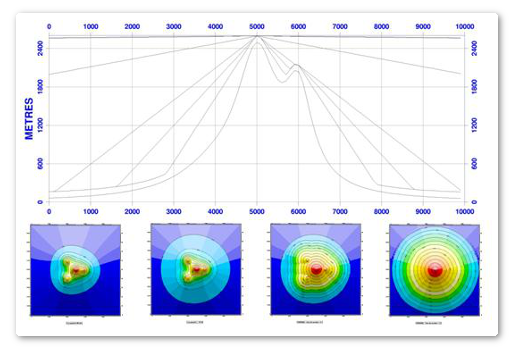Draping
The draped surface is calculated using the worst of the climb and descent rates of the aircraft in the survey configuration, plus a safety ratio. The draped surface is calculated in the two orthogonal directions (lines and tie-lines). In practice, as the pilot never receives the wind with the same angle, this surface is only a model that the pilot will try to fit. This surface is now used both for fixed-wing and helicopter navigation in rugged topography.
On the following picture, we show the theoretical profile beneath which the pilot should never descent, for different aircrafts types and capacities. The clearance variations are dramatic for high frequency and low magnitude anomalies and generate corrugated effects for flights in opposite directions.


